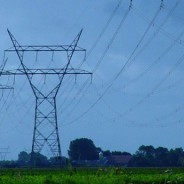Power Dispatch More than a Supply Stack
The most used tool for new comers to the power market is the dispatch stack. The dispatch stack is basically the variable cost of production of power by each generating unit, stacked from least cost to most cost. Clearly units with low fuel to no fuel cost will be the lowest to the least efficient, highest fuel cost being the far right. EIA put out the hypothetical 2011 stack – http://www.eia.gov/todayinenergy/detail.cfm?id=9430
Those not directly involved in power markets will first take note of the low cost of renewables. However, you will also note nuclear being near zero cost. The stack does not take into account the capital cost portion of the project. As economic nature would have it, the high capital cost projects typically have the lower fuel cost and vice versa. The best of both worlds is very hard to achieve, hence a complicated process of developing a cost effective resource plan to balance the various tradeoffs. Besides the stack not accounting for capital cost therefore the typical dispatch cost does not account for operational issues.
Once again economic nature also produces higher variable power cost units as the unit becomes more flexible (the ability to turn off and on and ramp quickly). Case in point, most coal or nuclear plant cannot quickly ramp or turn off and on rapidly to account for the fluctuations of the market whereas inefficient gas units have extreme flexibility, but it comes with much higher power cost. If the market had constant energy level than perhaps supply stacks would be useful tools for analyzing power markets. However that is not the case as documented in my other blog. A deeper analysis is needed for the power markets – https://allenergyconsulting.com/blog/2012/06/05/levelized-cost-of-electricity-lcoe-analysis-potentially-misguides-you-in-the-power-markets/
Detailed analysis is needed on at least an hourly basis to really understand what is going on in the power markets. Another important feature of the power market due to the instantaneous issues is how the market gets priced. In the power market, all generators get the marginal price. As an example, if we had a system with 500MW of demand with only three power plants. Each power plant is sized at 200MW of capacity. Plant A bids at $50/MWh. Plant B bids at $5/MWh. Plant C bids at $35/MWh. If we assume a flat load the following outcomes occur based on varying demand.
Demand 550MW – Plant A gets to dispatch 150MW. Plant B and C gets to dispatch at 200MW each. They all get $50/MWh.
Demand 300MW – Plant B gets to dispatch 200MW. Plant C gets to dispatch 100MW. Plant A does not get dispatch and gets no revenue. Plant B and C get $35/MWh.
With this bidding mechanism, many of the renewable plants given that they only get their tax credit when they produce power will actually bid into the market to a NEGATIVE $22/MWh to ensure they are dispatched to collect their tax credit. Renewable plants typically already have a fixed power purchase agreement with the rate payer typically paying the bill. This dispatch price just impacts the wholesale market. The only concern utilities should have is when the wholesale price diverges so far away from the arranged power purchase contracts. At this point commissions should step up and question the decision making from the utilities and perhaps even their own mandates. This difference is really the true cost impact of renewables on society. Calculating wholesale power price as the cost to society from renewables is misleading and misrepresenting reality given most renewable deals are fixed. Another potential outcome of large digression between wholesale prices and retail prices is further push for more de-regulation.
There is much to discuss in how power markets work, but in a nutshell I tried to explain at high-level the dispatch stack and the realities of the market place. If you have further questions or are in need of examining the power markets please do consider All Energy Consulting.
Happy New Year – May you have a prosperous year!
Your Energy Analyst,
614-356-0484


